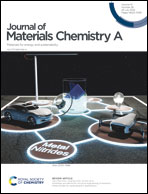Regulating zinc metal anodes via novel electrolytes in rechargeable zinc-based batteries
Abstract
Zinc metal anode-based batteries (ZMBs) are regarded as promising substitutes for lithium-ion batteries (LIBs) in large-scale energy storage devices and wearable electronics due to their merits of intrinsic safety, cost-effectiveness and abundant reserves. However, many challenges in the electrolyte module system hinder the practical applications of ZMBs, including the dendrite growth, corrosion, hydrogen evolution reaction (HER) and passivation in aqueous-based electrolytes (ABEs) and low ionic conductivity in gel or solid-state electrolytes (SSEs). This review focuses on advanced electrolyte engineering to solve the above issues and summarizes the latest strategies to construct an efficient and stable electrode–electrolyte interface by optimizing ABEs and developing neoteric SSEs. The modifications of ABEs are systematically reviewed from four aspects: introducing electrolyte additives, developing highly or local highly concentrated electrolytes, designing the structure of gel electrolytes, and employing solid-state electrolytes. Lastly, this review proposes the further development directions in terms of long-term storage under practical application scenarios.



 Please wait while we load your content...
Please wait while we load your content...